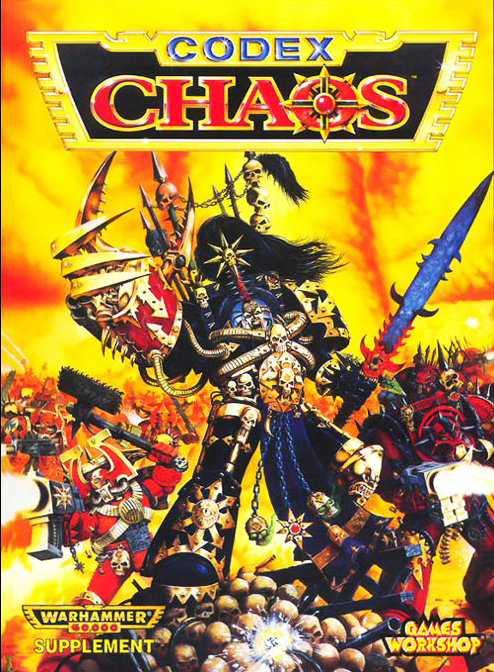This week we’re taking a look back to 25 years ago and some of the key releases of 1996. Perhaps no release had a bigger impact on the future of Warhammer 40,000 than Codex: Chaos.
While Rogue Trader’s Realm of Chaos books – Slaves to Darkness and the Lost and the Damned – introduced the traitor legions of Chaos as a series of scattered warbands and raiders who venture into the Imperium from the Eye of Terror to plunder, the 2nd edition version of Codex: Chaos Space Marines presents them as a much more organized and dangerous threat, introducing us to Black Crusades, key characters in the Traitor Legions, and the Daemon Princes that can lead entire forces of warp-spawned horrors into realspace. Codex: Chaos is the book that fundamentally reshaped Chaos Space Marines, bringing them into an aesthetic that would remain largely unchanged to the modern day. The book also gave us our first comprehensive look at the traitor legions themselves, several of which had never been mentioned or had only been a single reference in a prior book, as well as an introduction to the concept of modern renegade chapters with our first look at the Red Corsairs and their leader, Huron Blackheart.
Over the last 25 years Games Workshop has changed how it approaches codexes several times. The Codexes of 2nd edition were softcover books that ran 100+ pages in length, packed with art, dozens of pages of fluff, color pages of models, and pages with datafaxes, wargear cards, and templates that could be cut out or photocopied. By comparison, the Codexes of 3rd, 4th, and 5th edition were little more than pamphlets, clocking in at 75-100 pages, though they were perhaps more focused. In most ways the codexes of 2nd edition have more in common with the modern hard-cover tomes released in 6th through 9th edition, albeit with only a small number of full-color pages in them reserved for showing off ‘Eavy Metal paint schemes. For this reason, the 2nd edition codexes remain much more collectible and interesting in the modern day than their later counterparts; the older fluff has a rougher but more interesting presentation and when the rules content holds no interest because the edition it refers to has been dead for 20 years, there’s a lot less to recommend about the 3rd-5th era books. So without further ado, let’s dive into what makes Codex: Chaos so great.
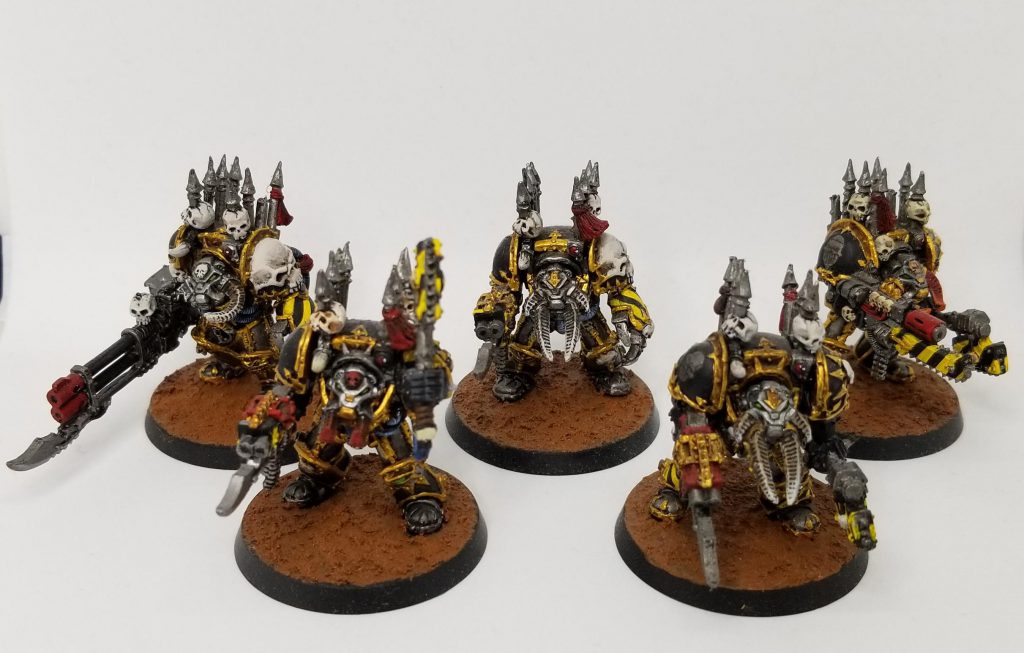
The Lore
One of the cooler things about looking back on this book 25 years later is seeing how the lore both evolved from the first edition of the game several years earlier and also seeing how it would change in the time since. There are a ton of threads in this book and many new ideas that would either be fleshed out in more detail later on or dropped altogether. It’s cool seeing what’s already fully formed at this stage in 40k’s history and what still needed tweaks.
The Horus Heresy
The first thing this book does is re-establish the lore of the Horus Heresy, telling the story of Horus’ decision to betray the Emperor beginning with the virus bombing of Istvaan III and the flight of the frigate Eisenstein. However it’s clear that this fluff is still very rough – there’s little to no characterization of the primarchs and what is here will be rewritten later with the release of new backstory in the Index Astartes series. For example:
No single Primarch was wholly resistant to these unspoken temptations. The character of each was sorely tested, and fully half of them failed their test. So subtle was their temptation that they never even suspected how their own loyalties were changing.
For example, Mortarion Primarch of the Death Guard Legion fully believed that he was the herald of a new age of justice. Angron of the World Eaters genuinely thought that he alone could save humanity from destruction. Horus too, the greatest primarch of all, was convinced of the martial ideals for which he fought.
That’s a far cry from the much more bitter, vengeance-driven characters we’d see fleshed out in later works. As the primarchs have been fleshed out they’ve slowly gone from benevolent super warriors corrupted by appealing to their own good intentions to much more human characters ruined by their upbringing, hubris, or betrayed by their brothers. They’re hardly characters at all in this book save Horus, who is prominently featured in the story of the Emperor’s final battle aboard the Vengeful Spirit (also just referred to as “Horus’ Battle Barge” in this book).
The resolution is the same story you’ve heard before – Horus and the Emperor kill each other, though in this version Horus flinches first – the forces of Chaos flee to the Eye of Terror, and the Golden Throne life support unit is built to house the Emperor, though the part about him psychically dictating its design plans aren’t in here. There’s also mention that after its construction the Emperor could communicate semi-coherently for brief periods before later lapsing into complete silence for almost ten thousand years. As a result the Emperor himself passes judgment on the traitor legions, ordering them to be expunged and driven into the Eye of Terror and removed from written history. This is broadly presented as a less-than-ideal solution but the most the weakened Imperium was capable of at the time.
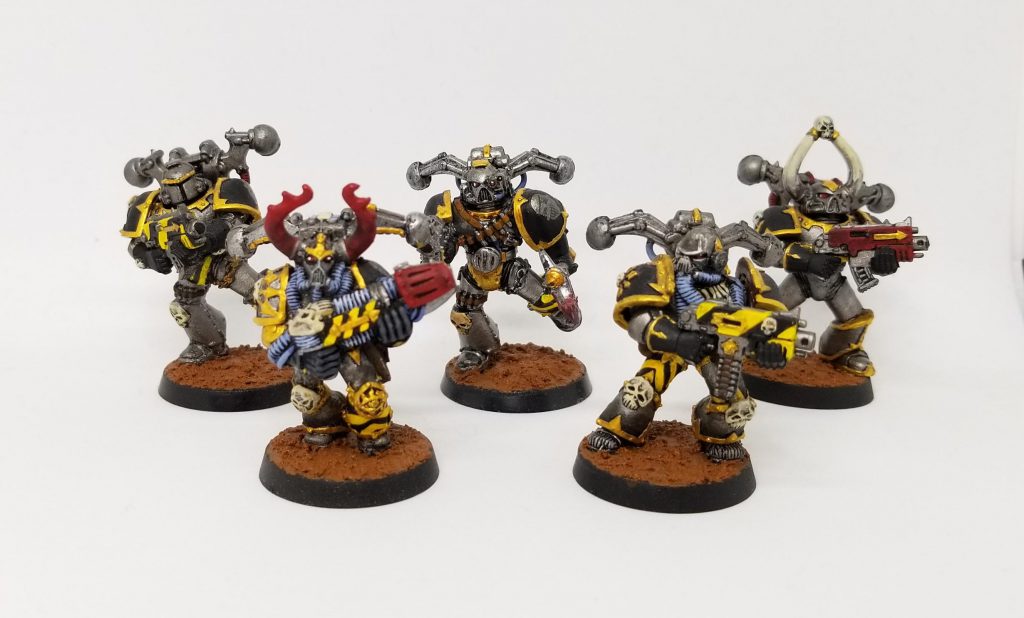
The Traitor Legions
One of the biggest things this book does is establish the nine Traitor Legions. Over six pages we get a few paragraphs for each legion, establishing a bit of their history, how they fight, and introducing their primarch – a first for some legions, though they’d all been named for the first time in the October 1993 issue of White Dwarf, which showcased the release of Warhammer 40,000’s 2nd edition (additionally it’s worth noting that in the 2nd edition fluff, only 9 primarch survived the Heresy and some died of old age around 1,400 years later rather than disappearing into the warp/comorragh/an asteroid until they’ll opt to return in “our darkest hour”). Mostly missing from these backstories are the home planets of the primarchs – while Nostramo is mentioned in the Night Lords’ fluff, key worlds like Nuceria wouldn’t be added to the backstory for another 5-6 years. Some fun differences and things to note:
- Death Guard – Typhus is nowhere to be seen (he wouldn’t be added until he second Chaos Space Marines Codex of 3rd edition), but the story of the Death Guard being stranded in a becalmed warp and set upon by plagues until Mortarion finally called upon Nurgle for help is here.
- Word Bearers – We get an introduction to Lorgar, whose legion was dedicated to converting planets to the Imperial Cult and building monuments before they were publicly reprimanded by the Emperor for wasting time. Lorgar is established here as the first of the traitor primarchs, turning to Chaos even before the fall of Horus, and they established Chaos Cults on a thousand worlds. The Word Bearers also get a mention as the only legion to still employ chaplains, a line that would never bear any fruit in rules form but would lay the groundwork for them getting some extra buffs for Dark Apostles 20 years later.
- Night Lords – The only legion backstory to mention the legion’s homeworld, Nostramo hasn’t changed much in the last 25 years – it was still a violent, twilit shithole that Curze took over and brought it to order through his own ruthless vigilante mission. Missing from this is any mention of the planet backsliding or Curze’s premonitions – the Night Lords of Codex: Chaos instead follow Curze’s ideals of ruthless efficiency and cynical disregard for human life. The Night Lords are also much less cowardly in this iteration – they don’t worship any one of the Chaos Gods and “have become instead cynical, hard-bitten, and frighteningly ruthless warriors. They fight for the pleasure of it, and the material rewards it can bring.” They’re mentioned as looking down on their more fanatical brothers in other legions and aren’t so much dedicated to sowing fear and terror – a development that would come later.
- Alpha Legion – This is basically the first time we learn anything about the Alpha Legion in 40k lore and it’s not a lot. They’re discovered late and described as being renowned for their strict organization and discipline, eager to outshine their older brothers. When Horus rebelled, they saw him as strong and the emperor way back on Terra as weak and relished the chance to clash with marines. Though even in this early state, they were clearly on some kind of crazy bullshit – “By the end of the Heresy they were inventing objectives and missions of their own to fulfill their war-lust without reference to their allies.” The Alpha Legion’s connection to cults are also established here – the fluff mentions that the Alpha Legion coordinates and directs cults across entire sectors to instigate insurrections, usually as a cover for their own raids or as a precursor to a full invasion.
- Emperor’s Children – We get a reference to the legion’s gene-seed flaw here, though it’s listed as “an accident during gene-seeding” rather than a bunch of tumors. The story of the Laer wouldn’t happen until later however and in this version Fulgrim just gets roped into a drug-fueled pleasure being during a parley at Istvaan that leads to him converting to worship of Slaanesh. The whole legion follows and at this point they were almost 100% noise marines, with senses distorted so badly that only the most extravagant colors and patterns can register on their minds. Also, the fact that they cloned Horus is mentioned here.
- The Iron Warriors – One of the most interesting bits about all of this is that the Iron Warriors’ rivalry with the Imperial Fists is nowhere to be found – they’re listed as the Emperor’s most able body of siege troops, and “fought alongside the Imperial Fists on a hundred worlds in the Great Crusade.” For their part, the Imperial Fists were described more as “the Emperor’s bodyguards” than siege masters at this point, and their rivalry wouldn’t exist until much later.
- The Thousand Sons – This is the book that introduces the Rubric of Ahriman and establishes the bitter enmity with the Space Wolves, as well as the Planet of the Sorcerers.
- The Black Legion – The Black Legion had already been mentioned in the lost and the damned, but their backstory is fully codified here, and we’re introduced to Abaddon the Despoiler for the first time. The legion’s story is now as much his story as Horus’.
- The Worldeaters – Listed as the “Worldeaters,” there’s nothing in here about Nuceria or Angron’s Spartacus-like past. Instead, they were just a bunch of particularly bloodthirsty warriors who, unprompted, would use psycho-surgery on their recruits to turn them into frothing madmen, something which led to them being censured by the Emperor.
It’s hard to understate both: 1. How big a shift this was for the Chaos faction, and 2. How much of our modern fluff comes from the Index Astartes series run in 3rd/4th edition. Most of the basic pieces are laid out here but they won’t be fleshed out for another 5-10 years.
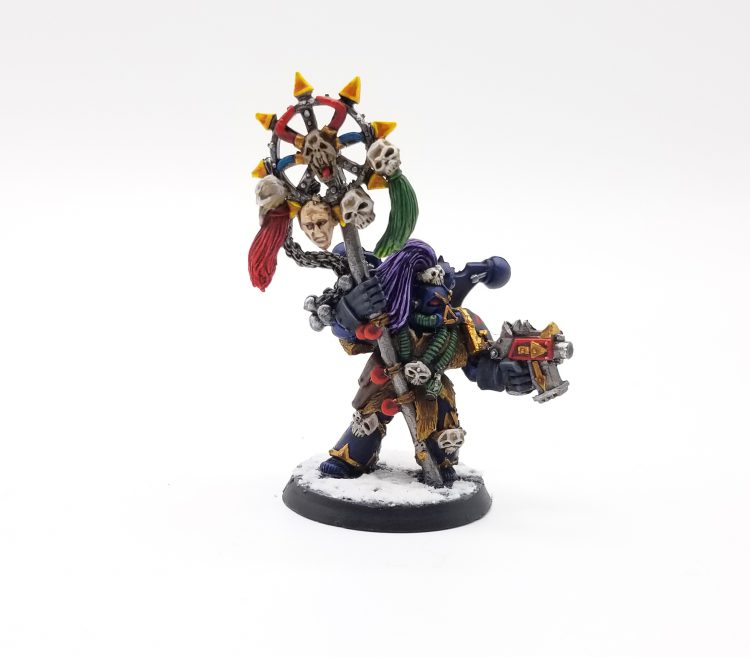
The Long War
Along with the introduction to the legions of traitor marines we’re treated in this book to a description of how modern Chaos marines operate, mostly splintered into warbands of varying sizes though the book also mentions that once or twice in a millennia, a truly great Champion of Chaos will emerge and lead many of these warbands together on a Black Crusade. That’s right – Black crusades were not previously the exclusive domain of Abaddon, but instead something that any bigtime Chaos Champion could initiate. They tended to be large-scale incursions of marines, daemons, cultists, beastmen, and titans and could visit ruins on entire systems.
The First Battle for Armageddon
The 2nd edition boxed set goes into a ton of detail on Ghazghkull’s attempted conquest of Armageddon – the small campaign book included in the box both gives the players backstory and a short campaign to play that takes place during the war – but it never really touches on the first battle for Armageddon. If you’ve ever wondered about that particular affair, it gets a detailed account in this book. The first war for Armageddon is a tightly-held secret in the Imperium as the forces of Angron descended on the planet amid a massive warp storm. They were only held at bay by a massive combined force of planetary defenders, Grey Knights, and the Space Wolves and the final battle saw Angron banished back to the warp for a hundred years and a day. In the aftermath of the battle the Administratum sterilised all but the highest-ranking officials in the planet’s population and marched them off to labor camps to die, while new laborers were brought in to replace them in the hives. Logan Grimnar saw this as a massively shitty betrayal of those who had so bravely battled against the forces of Chaos and has never forgiving the Administratum for it. Or maybe he has now in the current lore.
The Tyrant of Badab
Codex: Chaos also introduces us to the prospect of modern traitor chapters and gives us the backstory of Huron Blackheart and his Red Corsairs. In this book we get a backstory of Huron’s rebellion and the aftermath, and a coda to that story in Huron’s own entry that details his modern-day exploits.
Overall the fluff here is very well written. It’s concise, it lays out plenty of detail where you need it, and it sets the stage wonderfully for the many different ways Chaos operates. It’s a testament to how well this content is written that most of the ideas here have remained unchanged over the last 25 years, or how many of these ideas were meaningfully expanded on. If there’s one area the fluff doesn’t quite work, it’s that it sometimes explains too much or gives you a little too much detail, with a voice that comes across as wholly impartial and reliable, making too many things unambiguous. As much as I love having definitive answers, it’s not an ideal way to present information like the motivations in the duel between the Emperor and Horus, or the fall of Caliban. It’s really cool to go back and see which of these elements would become key pillars of the legions’ lore 25 years later, though as we’ll see some things that did become core – specifically the wargear limitations – ended up being more of a convoluted mess as the details of the larger 40k narrative changed.
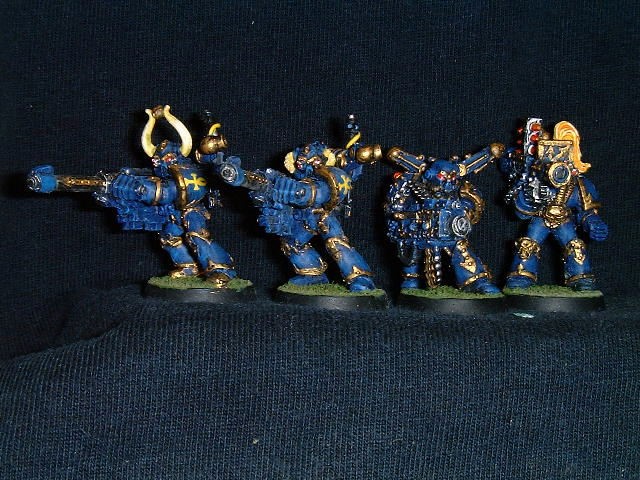
The Rules
Let’s jump into the meat of the book and by far the least relevant part of this review – the Rules. As fun as it would be to talk about these rules like this is a brand-new 2nd edition release and look how cool these are, I’m going to talk about these rules in a broader sense and how they laid the groundwork for the current Chaos Space Marines rules. Also, I’m going to have a little fun talking about the 2nd edition ruleset as a whole and how bonkers some of it was, though I’ll save some of the gawking for Greg’s review this week.
The Marks of Chaos
Marks of Chaos make a debut here and each one comes with its own rules. The Mark of Nurgle gives you +1 Toughness as your body is dulled disease and partially rotted away; the Mark of Slaanesh makes you immune to psychology and break tests; the Mark of Tzeentch makes you a psyker in most cases and gives you the ability to nullify incoming psychic attacks on a 4+; and the Mark of Khorne gives you a 2+ save as your armor is bonded to your body plus you’re affected by the Frenzy rule, except you can still parry when frenzied. Each mark of Chaos has a different cost associated with it, ranging from +10 to +30 points, and only champions could take marks of chaos – regular marines, veterans, terminators, et al were unable to take them. In addition, only Chaos Lords and Sorcerers could have the Mark of Tzeentch, and Chaos lords could have any number of marks, making it common to see Chaos Lords sporting all four benefits (and also rocking into battle as level 4 psykers).
Wargear
OK strap in because this is where things get wild. You know that meme about Abaddon telling the traitor legions to jettison their land speeders, jump packs, grav weapons, assault cannons, and other tanks before they head into the Eye of Terror? Well most of that comes from this book and older fluff. And it’s not because that actually happened – prior to 3rd edition, the Imperium actually still invented things and iterated on their technology! Check out this passage:
When the Legions began re-equipping [during the Heresy], a number of weapons which would come into common use later were still experimental or even purely theoretical. Many other weapons relied on sciences that were barely understood but which had been found in ancient vaults of dark technology and copied for general use. For example, the Traitor Legions had no access to Melta bombs or multi-meltas, but melta-guns were commonly available. Likewise, portable (though dangerous) plasma guns and even pistols existed but the heavy plasma gun could only be mounted on a Dreadnought or vehicle.
The 2nd edition fluff instead presents Chaos Space Marines as “stuck” with the weapons of 10,000 years ago and as such not having access to Assault Cannons, Plasma Cannons, multi-meltas, melta-bombs, storm bolters, jump packs, land speeders, or grav equipment. Likewise, their terminator armor came without teleport homers or targeters – bulky, faulty tech that wouldn’t be perfected until later – and their power armor was noted as having immobile helmets and lots of exposed cables and is generally presented here as worse than modern Imperial Codex Armor. This means that Chaos terminators lacked the +1 to hit that loyalists got and couldn’t teleport onto the table (with one exception). They also couldn’t have storm shields and thunder hammers, since the latter were literally only an option on Dreadnoughts and “it was a testament to Imperial ingenuity that these could be sufficiently miniaturized to be wielded by marines in suits of Terminator armor.”
As a consolation prize for lacking this technology, the Chaos Legions had access to a wider variety of melee weapons – Power Axes, maces, and chainaxes – and a few prototype weapons, such as combi-weapons (the precursor to storm bolters) and the Reaper Autocannon, which had a lower rate of fire but tended to jam less often and hit a little harder. Also traitor Plasma guns were more likely to overheat and explode but didn’t have to recharge for a turn between shots. Chaos armies can also take more modern weaponry and wargear from Imperial Space Marine armies, but in order to do so they pay a premium of 50% more points. Which is uh, not great.
This makes a lot more sense as an explanation for why Chaos doesn’t have access to some of the same equipment as the Imperium, something that would become increasingly silly in later editions when the story changed to “the Imperium never invents anything and technology was way better during the Heresy.” The knock-on effects of these initial decisions are still around today, where we can see a distinct lack of infantry-mounted Multi-meltas and plasma cannons in Chaos Space Marine armies, and no transport options outside of Rhinos and Land Raiders. The net result of this is that Chaos Space Marines in 2nd edition end up lacking the ability to reliably teleport into battle, have no jump infantry, and don’t have land speeders, which means on the table they are excrutiatingly slow. So Chaos Marines in 2nd edition basically played like very slow space marines who were slightly better in melee combat. This was a problem, mostly because melee combat in 2nd edition 40k was terrible – models could fight any model they were in direct base-to-base contact with, and when they did so they’d roll 1D6 for each Attack they had, took the highest result, added their WS, and compared it to their opponent’s WS+roll, and whoever got higher hit their opponent a number of times equal to the distance. This made it pretty easy to eliminate a single model with a good melee combatant but it also meant that, in a good game of 40k, your combat monster would kill… 4 enemy models.
The other big add for Chaos Space Marines is the Sonic weaponry of Noise Marines – Blastmasters, Sonic Blasters, and Doom Sirens all have their own rules and they’re all pretty great. Blastmasters in particular were capable of shredding vehicles with an armor penetration roll of 3D6+8, which would tear through most armor reliably. Sonic Blasters offered a high rate-of-fire, save -2 alternative to bolters.
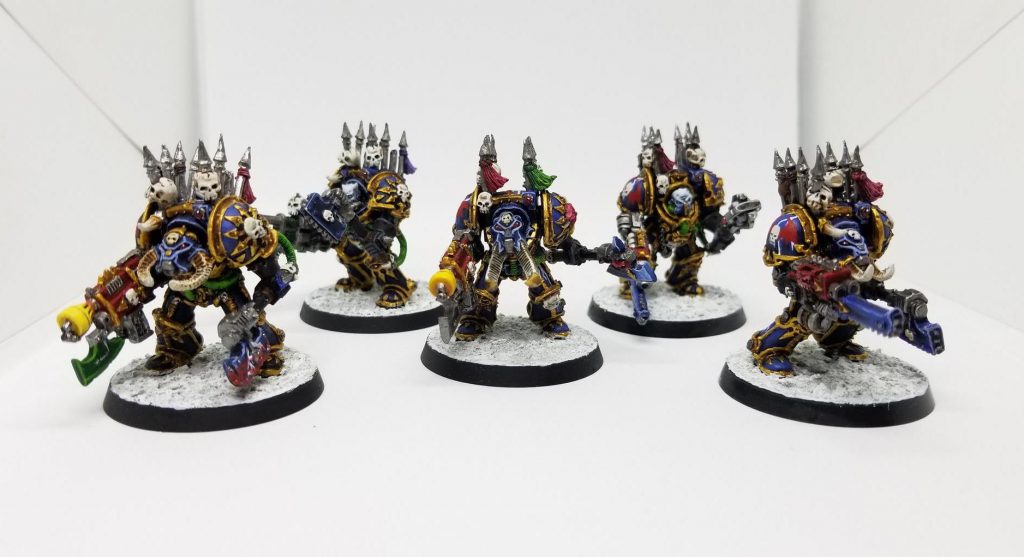
Units
Codex: Chaos came with the start of an all-new line of metal models and it shows. There’s a ton of great minis that made their debut in this book, but there are also quite a few units that wouldn’t get minis until later, and some that wouldn’t see releases at all until after third edition. Units-wise, you have access to basic Chaos Space Marines, who don’t have tactical/devastator/assault distinctions but can instead just take three heavy or assault weapons and can take melee loadouts, you’ve got Veterans, who are tougher, better marines who can Infiltrate and only need 4″ for coherency, you’ve got Bikers – a new metal upgrade kit for the ancient marine bikers, Terminators, Icon bearers, sorcerers, chaos lords, dreadnoughts, and tanks.
On top of that, you’ve got the four cult troops – Berserkers and Plague Marines, each of which had new metal models, Thousand Sons, who wouldn’t get new models until third edition, and Noise Marines, who got their new metal minis about a year after the Codex released. Each of these has their own quirks – Berserkers are frenzied warriors of Khorne, but still able to parry. Noise Marines have their own bespoke guns which were absolutely monstrous on the table, plus they could disrupt nearby psykers. Plague marines were very tough to kill and packed plague knives, which would automatically kill any wounded “living” target on a D6 roll of a 6.
Thousand Sons were maybe the oddest of the four cult choices thanks to the introduction of Rubric marines, who had all of the vulnerabilities and immunities of daemons but lacked the invulnerable save. This meant that they were immune to blinding attacks, gases, toxins, graviton guns, electro hulls, and ignored psychology and break tests, though they were more susceptible to psychic attacks and force weapons.
These are pretty run-of-the mill, though there were some cool wrinkles even in those days – Terminators could be upgraded to be Berserkers, Plague Marines, Noise Marines, or Thousand Sons, and given the appropriate wargear to compensate. Being able to deep strike a unit of Noise Marine Terminators to disrupt psykers was a pretty solid strategy. In 2nd edition, champions were add-ons to squads purchased separately and so you had the option of taking terminator champions for regular squads. And you could add daemons to your army, provided you summoned them to the table later in the Psychic phase using summoning points. Summoning points were accumulated differently for each god – Khorne points were generated from hits in melee-combat, wounds inflicted scored Nurgle points, forcing break tests would score Slaanesh points, and force cards used by either side in the psychic phase scored Tzeentch points. It’s hard to articulate how bad these rules are. Let me start by saying that most games of 2nd edition 40k had four turns. When I mentioned earlier that a “good game” involved your melee model killing four enemy models? That’s the other reason why. This means that if you wanted to include a greater daemon like a Bloodthirster, you’d have to spend 300 points, then accumulate 10 summoning points, which means charging enough models in hand-to-hand combat to score hits. Given the timing, that probably means your greater daemon will arrive, at the earliest, on turn 2, but probably 3, and the Psychic phase happens at the end of each player’s turn. Also, if the Energy Drain psychic card is played, no one can summon that turn. This sucks.
Fortunately there are a couple of other options – Great Daemons can enter the battle by possessing champions with the appropriate mark, raising their costs another 50+ points, and any enemy units that teleport into battle while there are chaos daemons waiting to be summoned run the risk of being possessed as they travel through the warp – roll a D6 for each and on a 1, you can kill that model and replace it with a Daemon (Grey Knights and Inquisitiors are immune to this). This is actually pretty nasty, and makes it worth taking a few lesser daemons if you know you’ll be up against something like Warp Spiders, who jump around all over the place.
In addition to the main Chaos Marines list, the book gives us an appendix with cultist and daemon world lists as well, for players who want to build either swarms of cultists or the types of daemon hordes that regularly fight in the Eye of Terror. These are more afterthoughts than real lists, and Chaos Cultists wouldn’t even get models until several years later. Your Daemon World army must be led by a Daemon Prince, and the book gives you four named options for those.
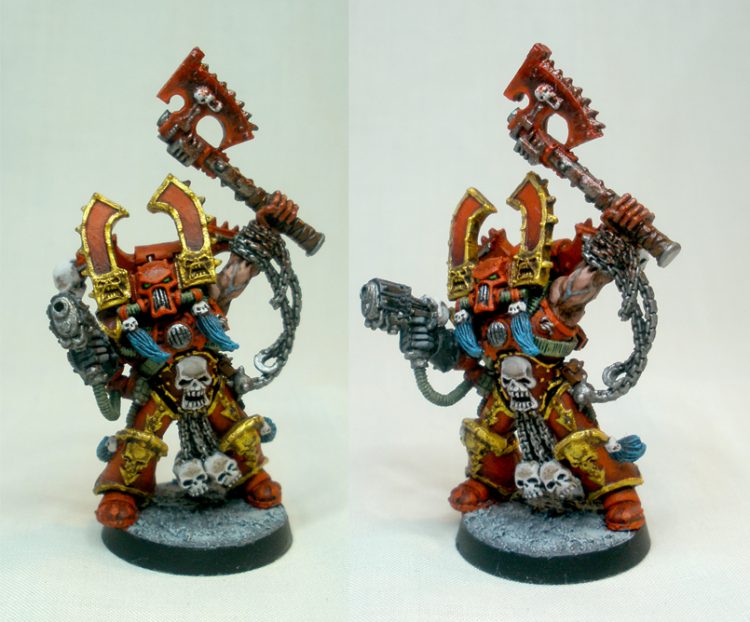
The Characters
Codex: Chaos introduces us to five named characters, each with their own quirks and rules: Abaddon the Despoiler, the star of the book and the faction, Kharn the Betrayer, a monstrous berserker favored by the blood god, Ahriman, the favored sorcerer of Tzeentch, the deranged apothecary Fabius Bile, and the renegade warleader Huron Blackheart, who wouldn’t get a model for another decade.
Abaddon is potentially the most imposing among these, clocking in at 275 points with his wargear, which includes the only set of Terminator Armor with a working teleporter, allowing him and any unit he’s with to teleport into battle at no cost. The 2nd edition rules for teleporting might be particularly onerous (you scatter a whopping 2d10″) but this is a pretty great benefit for an army that otherwise has to walk all the way across the table to punch its opponents. Abaddon also comes with the Talon of Horus, which incorporates a prototype Storm Bolter and gives Abaddon a parry while causing Terror in Imperial forces, plus it does D3 damage. And the Daemon sword Drach’nyen gives Abaddon a second parry and will automatically wound anything it hits with no save allowed, making it a devastating weapon to be hit by. In close combat Abaddon has 4 attacks at WS 8 and he’s likely to beat almost any opponent in the game in one-on-one combat.
…except for maybe Kharn the Betrayer, who clocks in at 217 points and has WS 9. Though Kharn only comes with 3 attacks, he has a 2+ save with the ability to re-roll failed saves and 6 wounds, plus opponents cannot parry his attacks and he can re-roll any fumbles (1s) in melee combat. His Gorechild axe is a beast as well, hitting at S7 with a -4 save mod. The downside however is that Kharne is a true berserker – while he can charge triple his move distance (a whopping 12″) to reach an opponent and follow-up 4″ instead of 2″, he’ll follow-up into the nearest model after fighting an enemy and if it’s a friendly he’ll attack and kill them just like an enemy.
Fabius Bile is all over the place, with an entirely random statline (he has D6 wounds, even) and the ability to enhance a squad of warriors, giving them +1″ movement and +1 S, T, and A at a cost of +5 points per model. He also has the Rod of Torment, which instantly disables any living model it wounds.
Huron Blackheart makes his debut here as the master of the Red Corsairs. He can take an extra wargear card to represent the horde of spoils he’s amassed and comes with the Tyrant’s claw, a power fist with a built-in heavy flamer that can Parry. What really causes Huron to stand out from other Chaos characters however is that he changes your army composition – Red Corsairs Terminators follow the rules for Terminators in Codex: Ultramarines instead of Codex: Chaos and have the ability to teleport into battle by paying a 50% points premium, and the Red Corsairs can take any weapons, equipment, or vehicles from the Wargear list and Support sections of Codex: Ultramarines without paying the extra 50% points cost. That’s pretty great and it means that Red Corsairs forces feel more like modern chapters turned traitor, which is kind of neat.

Finally there’s Ahriman, introduced here and potentially the strongest psyker in all of 40k for a long time. He’s got a mastery level of 4 and his black staff reduces the cost of powers by 1 force, plus he always gets dealt the first force card and gets to play the first power. He can also have powers from the Adeptus and Librarian decks, making him incredibly versatile. As an added bonus, if Ahriman is in your army you can discard and draw replacements for any strategy cards you get at the start of the game, which is stupidly, incredibly good. As a result, Abaddon may be more imposing in melee, but Ahriman is much more potent force multiplier and that’s why he clocks in at 315 points.
There are also four daemon princes, whose names have popped up in the fluff on various occasions – N’Kari, Foulspawn, M’Kachan, and Doombreed, each dedicated to a different Chaos god. They’re all stupid expensive and very powerful and mostly a waste of points.
OK there is one more character – Codex: Chaos also introduces Cypher, and talks about the Fallen Angels and how half of the Dark Angels legion decided to be cool before Lion’El Johnson showed up and ruined things. Cypher comes with a pair of master-crafted pistols and a C’Tan phase knife that could pass right through armor and energy fields. That’s right – mentions of the C’Tan in 40k predate the Necrons. Cypher and the Callidus Assassins used to use “C’Tan phase weaponry,” which could phase in and out of reality to bypass armor and energy fields. Later on when the C’Tan were first introduced in late 3rd edition with Codex: Necrons, these weapons were retconned to be made of the same material as the C’Tans’ necrodermis, and striking a C’Tan with one would cause the weapon to be absorbed back into its body, disarming the attacker. This is supposedly how Cypher lost his knife, trying to stab the Deceiver during a battle in the 13th Black Crusade. The original one in the early 2000s, not the second one that happened at the end of 7th edition. Later the weapons would be changed to no longer be C’Tan weapons, since that made less sense with the change to the Necron faction in 5th edition. Even in his initial incarnation, Cypher was more of a novelty than something you’d actually field.
The ‘Eavy Metal Pages
This book has a spread of beautiful color pages of minis that inspired me like nothing else I’ve seen in a Codex since. You’ve got page after page, covering each legion save the Emperor’s Children (who would get noise marine models a short time later), plus many cool conversions to help make the metal line appear more varied. Plus within these is one of the greatest two-page spreads ever printed in a GW book:
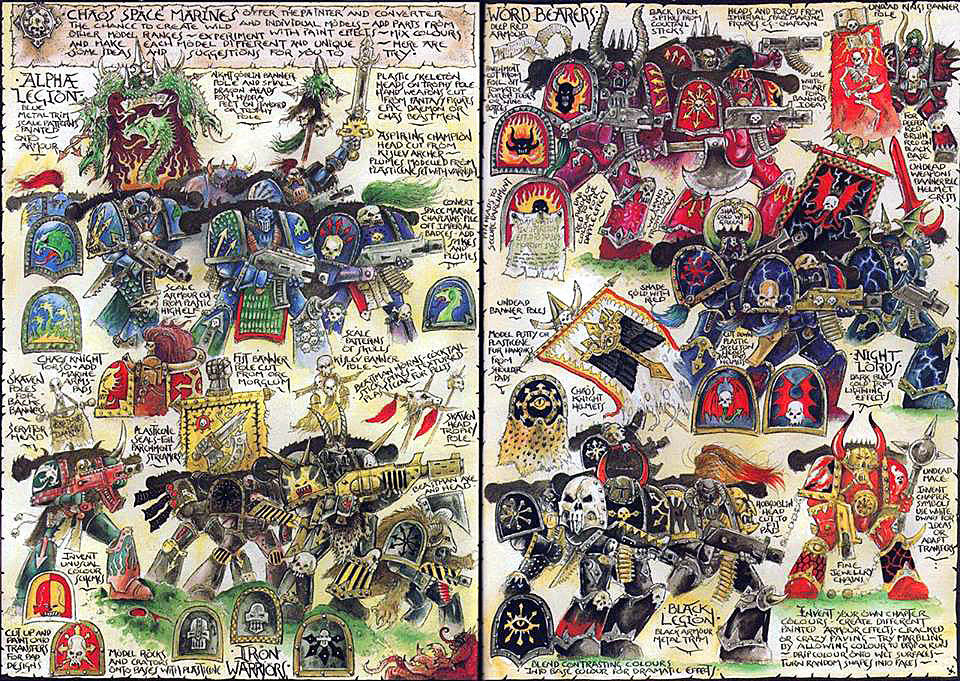
This two-page spread outlines a number of different ways to convert and paint your marines, adding heraldry and doing interesting variations on their visual design. It’s an incredibly cool set of pages and there’s nothing like it in any other Codex. I’ll take this over a boring page on chapter heraldry any day and as a kid I referred back to these section over and over for ideas on how to paint the legions. It’s such a cool idea and I wish GW would do more stuff like it.
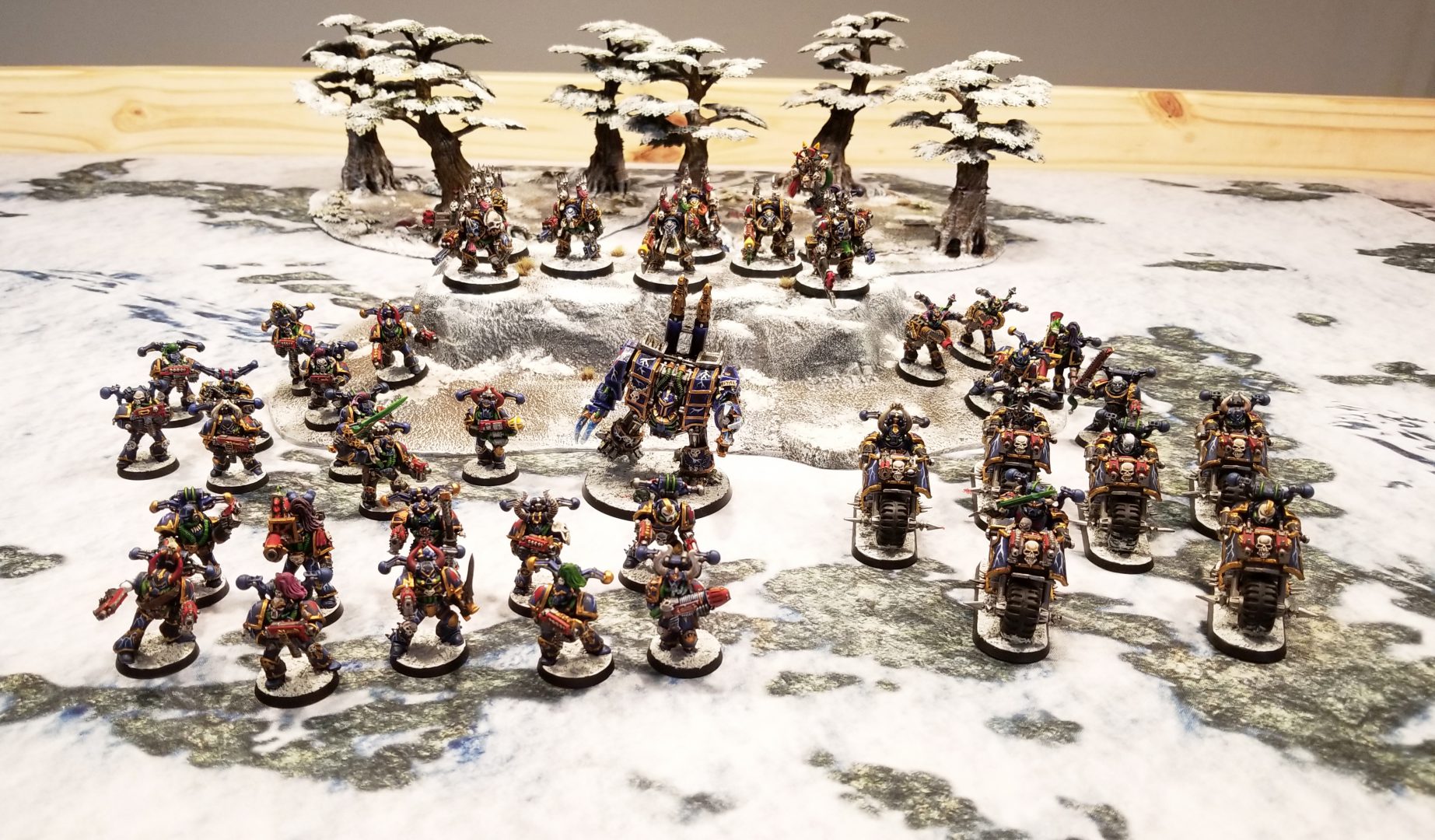
Final Thoughts
Codex: Chaos was by no means the most powerful codex of the 2nd edition era – the answer there is probably Codex: Eldar, which contained more than a dozen busted units and had range, psychic prowess, and speed for days – but it’s arguably one of the most influential and long-lasting, setting both the seeds for a massive amount of the modern fluff (including Abaddon the Despoiler and Black Crusades), and also establishing a number of rules and guidelines for the faction that would endure despite wholesale changes to the game’s background. As a book, it’s worth owning even today, if only for the lovely ‘Eavy Metal pages and the Blanche spread so if you can find it somewhere, snag it and never let go of it. My current copy is not the original I bought in ’96, sadly – that copy fell apart a long time ago and was replaced with an ebay rescue that Greg gave me. But I still refer back to it every now and again for ideas and to look at the classic 2nd edition ‘Eavy Metal paint schemes for the legions, which in my opinion are significantly more appealing than the more muted palettes used on the modern schemes.
Anyways I hope you enjoyed this trip down memory lane with me. If you’re looking for more, stay tuned: We’ve got more retro reviews coming up this week, including Greg taking a look at the other Codex release of 1996: Angels of Death.
Have any questions or feedback? Drop us a note in the comments below or email us at contact@goonhammer.com.
